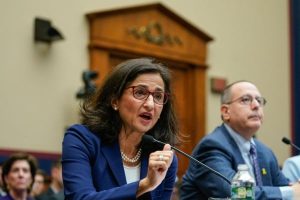On National ‘Day of Action for Higher Ed,’ Some Rally, Others Strike
Many students, faculty, and staff across the country participated in the National Day of Action for Higher Ed on Tuesday, with some opting to rally in support of better funding and resources for universities, while others went on strike to demand fair wages and working conditions.
The day of action was organized by various student and labor organizations, including the United States Student Association (USSA), the American Federation of Teachers (AFT), and the Service Employees International Union (SEIU). The goal of the event was to bring attention to the growing challenges facing higher education, including rising tuition costs, declining government funding, and the exploitation of adjunct faculty and staff.
In cities like New York, Los Angeles, and Chicago, students and faculty gathered to demand more state and federal funding for universities and colleges. They also called for an end to budget cuts and increased support for public higher education. Many participants held signs that read “Education is a Right, Not a Privilege” and “Fund Public Education.”
Meanwhile, in other parts of the country, adjunct faculty and university workers went on strike to demand better wages and benefits. In some cases, these workers have been fighting for years for fair treatment, with many living in poverty despite working multiple jobs.
The National Day of Action for Higher Ed is just the latest in a series of protests and actions taking place across the country in recent years. In 2018, the wave of teacher strikes in states like West Virginia, Oklahoma, and Arizona brought national attention to the issue of underfunded schools and low teacher pay. And in 2020, the COVID-19 pandemic exposed the precarious working conditions faced by many adjunct faculty and staff, as universities laid off workers and cut budgets.
As the fight for better higher education funding and working conditions continues, organizers of the National Day of Action for Higher Ed are urging students, faculty, and staff to keep up the pressure on lawmakers and university administrators. They argue that a well-funded and supported higher education system is not only a moral imperative but also an economic necessity, as a strong workforce relies on a well-educated populace.
In the end, the success of the National Day of Action for Higher Ed will be measured not only by the number of participants who took to the streets or went on strike but also by the lasting impact it has on shaping the future of higher education in the United States. Only time will tell if these actions lead to real change or if they remain just another day of protest in a long struggle for a better future.



